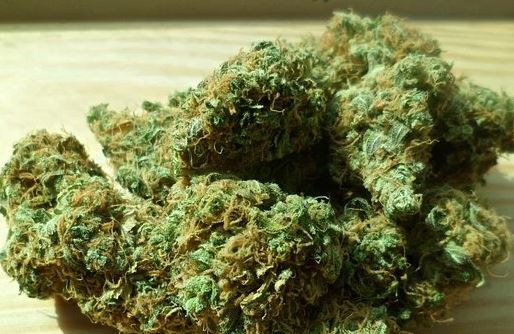
How Many Cannabinoids are There? | Simply ERB
How Many Cannabinoids are There?
As researchers started to study THC, CBD, and the endocannabinoid system they began to discover a wide variety of cannabinoids and compounds that improve the bioavailability and efficacy of cannabis. These new cannabinoids have unique molecular shapes and work synergistically to optimize the consumer’s high or therapeutic properties. To date, there have been an estimated 113 different cannabinoids that have been discovered in cannabis and this number is expected to keep growing.
In the future we hope to live in a world where cannabinoid profiles can be used to give consumers exact information about what type of experience each cultivar will be able to offer. There is also a debate to what actually qualifies as a cannabinoid and what are the best methods to develop a full cannabinoid fingerprint of each cannabis strain. As the cannabis industry continues to mature we expect cannabinoid profile testing to continue to improve and these are exciting times for the scientists who are trying to unravel the secrets of cannabinoid profiles.
The most popular and most concentrated plant cannabinoids (from those of Cannabis plant) include tetrahydrocannabinol (THC) ), cannabidiol (CBD), cannabinol (CBN), cannabigerol (CBG), cannabichromene (CBC), and tetrahydrocannabinol (THCV). Many cannabinoids are present at extremely low levels, but can have a major impact on the development and effects of more concentrated cannabinoids like THC or CBD. For example, a study found cannabigerol (CBG) is typically less than 1% of total cannabinoids, but CBGa is the precursor to the top main cannabinoids, THCa, CBDa and CBCa. After CBGa is produced in the plant’s trichomes the cannabinoid is instantly transformed by enzymes that turn CBGa into one of the more popular acid form cannabinoids. Many breeders (hemp breeders) are looking to develop plants that produce higher concentrations of CBGa and many processors are experimenting with early harvests in an effort to collect more of this non-psychoactive cannabinoid.
Other cannabinoids like cannabinol (CBN) are created as THC thermally degrades and transforms into a new cannabinoid structure. Further research on how cannabinoids develop and transform will allow future breeders, growers and processors to become more skilled at developing personalized and more specific cannabinoid experiences. Small changes in the soil health or ultraviolet light exposure can have a major impact on the cannabinoids that are produced.
As scientists continue to research the cannabis plant they are also finding new cannabinoids that have stronger medicinal properties than THC or CBD. A new cannabinoid called Tetrahydrocannabiphorol (THCP) was recently discovered and was found to be 30 times as active as THC to CB-1 receptors. Many of these more unique cannabinoids can only be extracted and preserved using processes that preserve the original plant chemicals. Researchers have also discovered a CBDP compound. THCP, terpenes, and other lesser-known cannabinoids are believed to be what causes the difference within cannabis strains that aren’t attributed to THC levels.
While discussing the wide variety of different cannabinoids one might get caught up trying to figure out what each specific cannabinoid does, but research is telling us that it’s not necessarily what each cannabinoid does, but it’s what all the cannabinoids do together. Cannabinoids and other plant chemicals that are found in cannabis work together to provide synergistic properties. Some of the most studied cannabinoids include:
- THC (delta9-tetrahydrocannabinol) – most popular cannabinoid and contains psychoactive effects. May increase creativity and questioning. High THC extracts don’t automatically qualify for high quality. All the bioactive chemicals in the plant material play a role in the effect of THC.
- Encourages relaxation.
- Neuroprotective.
- CBD – Not psychoactive.
- Reduce or prevent seizures and spasms.
- Reduce inflammation.
- Reduce anxiety
- Neuroprotective.
- CBN – May be used as a sleep aid and can be encouraged by adding extra heat during the curing process. Harvesting late is encouraged (trichomes have turned amber).
Minor Cannabinoids: Secondary chemicals enhance primary cannabinoids.
- CBG (cannabigerol) – CB1 receptor antagonist that may block the psychoactive properties of THC. Research is discovering that all cannabinoids are derived from CBG and this cannabinoid acts like a stem cell.
- CBC (cannabichromene) – non-psychoactive that binds to vanilloid receptor 1 (TRPV1)
- THCV (tetrahydrocannabinol) – May suppress appetite.
Acid form Cannabinoids
THC and CBD may be the most talked-about cannabinoids, but freshly cut cannabis or ‘raw’ cannabis is actually packed full of acid form precursors to THC and CBD. The abbreviations for these acid precursors are THCa and CBDa and as cannabis or hemp natural dries these cannabinoids go through a process called decarboxylation where they lose their acids and turn into THC and CBD.
The first wave of scientific research reported that cannabinoids with carboxylic acids didn’t contain the same medicinal properties as their metabolites, but recent research is now reversing this idea. This has lead to a rise in growing, preparing, and extraction methods that preserve these chemicals. The acid form cannabinoid CBDa has even been shown to inhibit aggressive forms of breast cancer.
Acid form cannabinoids are now being looked at as superior options when it comes to formulating medicinal products. Recent research has uncovered that acid form cannabinoids have their own medicinal effects and some studies suggest they have higher bioavailability in humans. Higher bioavailability means your body absorbs and metabolizes CBDa more efficiently and with less energy than CBD.
THCa doesn’t get you stoned and that’s exactly why it should be a staple in your wellness routine. Many medical experts and cannabis educational sites are even promoting juicing as the best way to get large doses of cannabinoid medicine without the high. More and more dispensaries and medical cannabis clinics are reporting a higher demand for acid form cannabinoid product lines.
Benefits of Acid Form Cannabinoids: (Raw cannabis / Non-psychoactive)
- A 2018 neurological review reported that CBDa bound to 5-HT serotonin-receptors 100x more efficiently than CBD. Our serotonin receptors are directly related to stress, anxiety, emotions, sleep, digestion, and mental health.
- Both THCa and CBDa block COX1 and COX2 inflammatory signals and can help alleviate arthritis and inflammatory skin diseases (COX1 and COX2 are the same inflammatory signals that ibuprofen blocks)
-
- Many of CBDa’s anticancer properties can be contributed to inhibiting COX1 and COX2.
- CBDa can be used as an anti-nausea supplement with zero sedative side effects. Many pharmaceutical options on the market for nausea cause more problems than they solve.
- There are actually two types of THCa, THCa-A, and THCa-B. Different strains have different ratios of these chemicals and thus have different medicinal benefits. Have we confused you yet?
- To test for THCa you need to use HPLC equipment.
- Smoking THCa turns roughly 30% of THCa into THC. (Very limited data)
THCa and CBDa clearly show medicinal properties on their own, but they are most effective when they are working synergistically with the other cannabinoids and bioactive chemicals in cannabis or whole-plant cannabis extracts. Acid form cannabinoids show great promise when it comes to providing therapeutic properties without the high and we recommend all of our customers that are looking to utilize cannabinoids medicinal to check out the non-psychoactive properties of acid form cannabinoids.
Story Wrap Up
Even though researchers are becoming better at identifying and isolating specific cannabinoids that doesn’t necessarily mean we know what they all do yet. Cannabis is extremely complex and what researchers are discovering is that many times cannabinoids will show certain traits when they are isolated, but could have completely different traits when they are combined with other cannabinoids or secondary metabolites.

